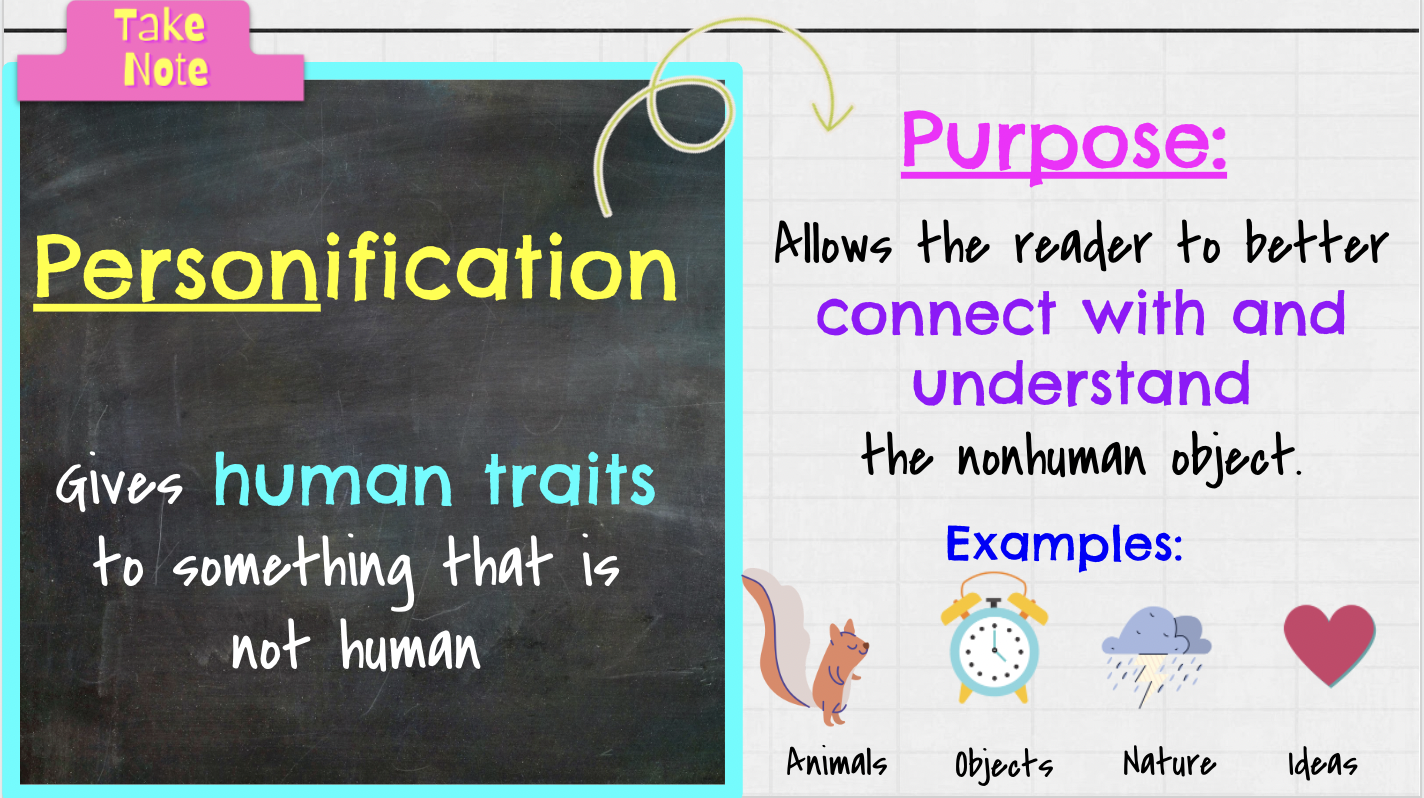5 Day Plan to Review Figurative Language
If you’re looking for a jumping off point for poetry or a way to review figurative language, then this post is for you!
Before we start reading and analyzing poetry as a class, one of the things that I have to make sure of is that my students know how to identify and analyze the meaning of figurative language.
In order to ensure my students have a strong foundation, I developed this week-long plan to review the basics of figurative language.
Day One: Academic Vocabulary
I usually review the heavy hitters that we see in poetry—simile, metaphor, personification, onomatopoeia, alliteration, hyperbole, idiom, imagery, and allusion.
1st: Access prior knowledge by having students write what they already know about each type of figurative language.
2nd: Check their answers with a mini lesson that reviews each term and associated definition. Because poetry is more than just identification, I also like to provide examples and talk about the purpose of each type of figurative language.
3rd: Make it hands on! I love to do matching activities after I review the terms. I do one where students match the word to the definition and another one where students match the word to an example.
Pro Tip - If you do not want to cut out matching cards, you can also use Google Slides! Create a table with the definitions or examples in each square. Off of the white screen, create a box for each term that students can see when they zoom out. Have students drag and drop the boxes into the correct squares.
Day Two: Station Rotation
This is a great way to get students moving and engaging with the content. I set up five quests throughout the room and put students in groups of four to six. They have ten minutes to complete each quest.
Quest 1: Part One - Students determine if the 8 sentences are a simile or not. Part Two- Students write their own examples and nonexamples of a simile.
Quest 2: Part One - Students read 5 examples and classify the type of figurative language used. Part Two - Students write dialogue where one of the characters uses an idiom in conversation.
Quest 3: Part One - Students write the purpose for each type of figurative language. Part Two - Provide students with three interesting images. They will select one and write a short passage about it using figurative language.
Quest 4: Part One - Students fill out an imagery graphic organizer based on their favorite season. Part Two - Students add imagery to boring sentences in order to make them more engaging.
Quest 5: Part One - Students match the allusion to the correct meaning. Part Two - Students write a paragraph that uses one of the allusions from the previous activity as a passing comment or thought made by a character.
Day Three: Digital Escape Room
It’s time to put their knowledge and understanding to the test with an escape room activity! The escape room I use requires students to solve three puzzles in order to escape the underground city of Derinkuyu. The puzzles review understanding of figurative language vocabulary through knowledge of definitions and identification.
For this activity, I put my students in groups of three or four and let them compete against each other to see who can complete the three puzzles first.
Puzzle One: Matching
This puzzle reviews the basics of figurative language - matching the vocabulary word to the correct definition.
Puzzle Two: Identifying
This puzzle has students identify the type of figurative language used in a sentence.
Puzzle Three: Application
This puzzle has students read an excerpt from a poem and answer the multiple choice about the type of figurative language used.
Day Four: Partner Figurative Language Scavenger Hunt
Students will hunt through a passage/excerpt to find examples of figurative language. After students read, they will complete the chart. For this activity, I have my students read an excerpt from Look Both Ways by Jason Reynolds.
For each example of figurative language they find, students record the page number, type of figurative language, meaning, and impact.
The chart I use has six available spaces. I tell my students their mission is to find five quality examples of figurative language in the selection. Their sixth spot is for “flexing” their figurative language skills. For this spot, they need to find an example of figurative language they think no one else will find.
Day 5: Frozen Review
This is always a favorite with my students!
We watch songs from the movie Frozen and analyze the lyrics for figurative language.
I took the lyrics and wrote multiple choice questions like they would see on the end of grade tests.
Resources to Help You
FREE Five Day Plan
Just fill out the form and you will be redirected to a Google folder where you can download the 5-day plan!
ELA Unlimited
The hub where you can download this resource plus many more!
Review Pack of Resources on TpT
Includes everything outlined in this post!












